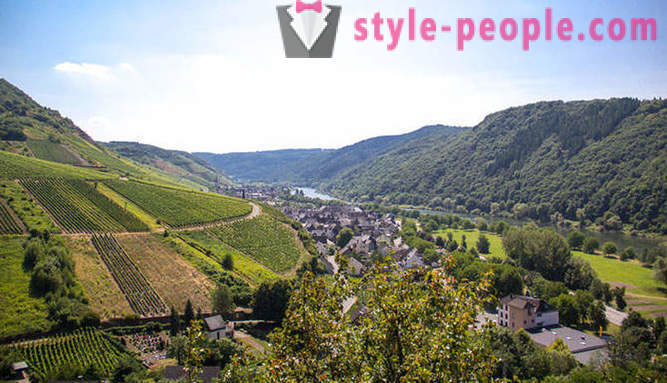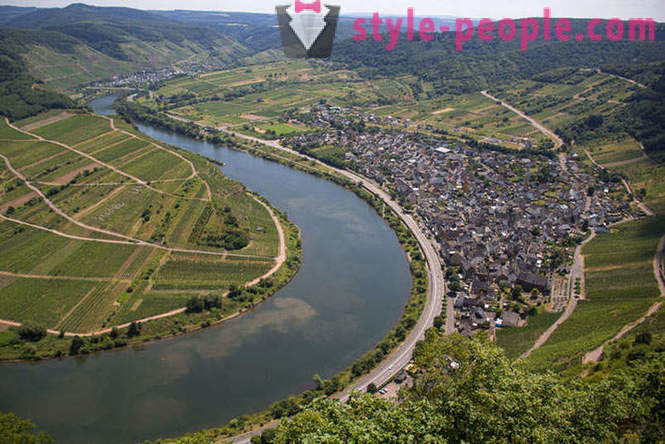How to make wine in Germany
• How to make wine in Germany
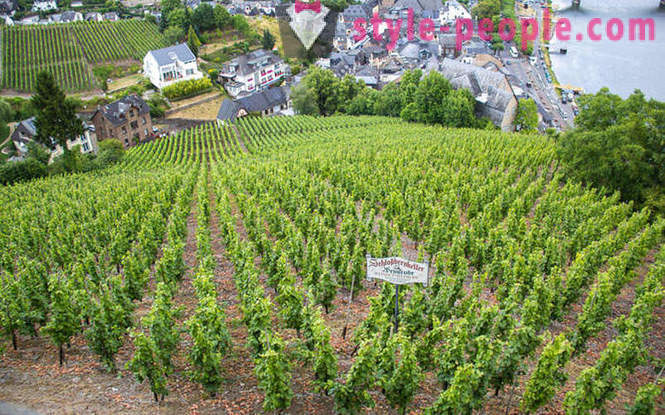
Mosel is famous, above all, as a wine region. The phrase "Moselle wine" is quite well known and is often found, for example, in European literature of the past two centuries. It is well known to fans and connoisseurs of wine today.
In Germany, of course, smaller wine regions, than in France or Italy. During the tour the winery, we have named 10 in the Wikipedia says about 13. Anyway, Moselle - not the biggest of them. Much more wines are made in the regions of Baden-Württemberg and Rheinhessen. On the Moselle - only 8-10% of the total German wine.
Why is the Moselle special?
Unlike most other German vineyards, as well as France and Italy, where the grapes grow on the plains, the vineyards of the Moselle - a vineyard on the slopes of the mountains. On the Moselle is the coolest, t. E. Almost vertical vineyard in Europe with a slope of about 70 degrees.

This unique location not only means a titanic work of winemakers, who have to constantly climb the mountains, caring for vines, but also one big advantage. Sunlight reflected from the Moselle water falls directly on the slopes of the mountains between which it takes place, so that the vines receive light and heat not only directly from the sun, but also reflected on the water. The mountains also protect from cold and wind.

Of course, most of the vineyards of the Moselle is only processed manually - no machine simply does not rise to the steep slopes.

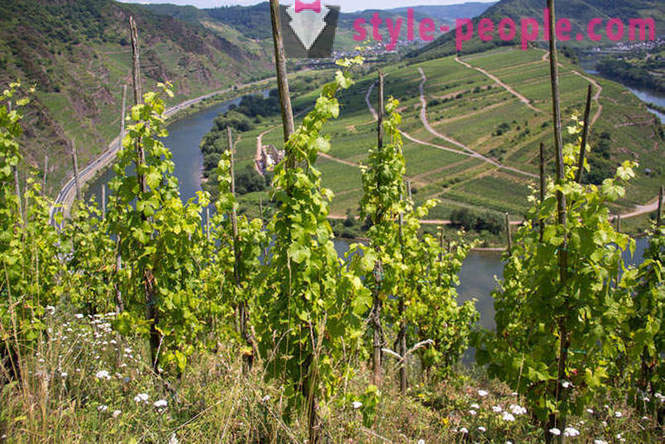
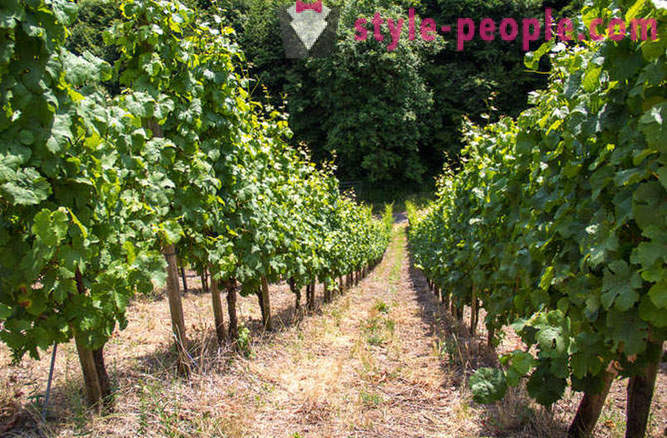
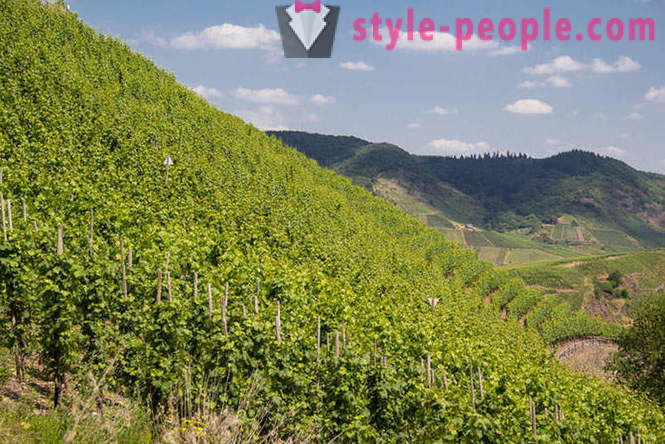
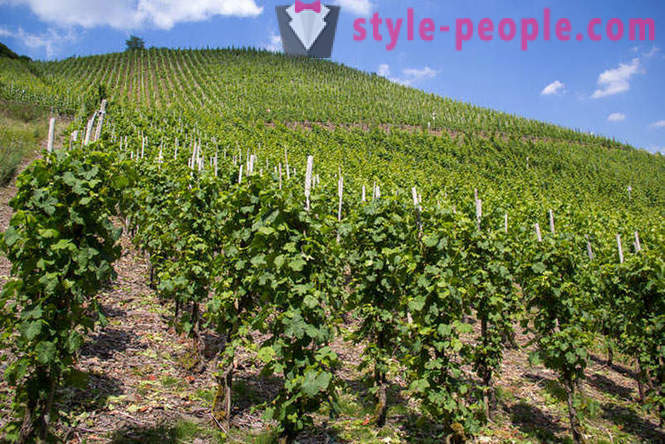
With the exception of several vineyards on more or less flat surface as pictured below, the grapes are harvested whole hands - themselves winemakers and the wage seasonal workers.
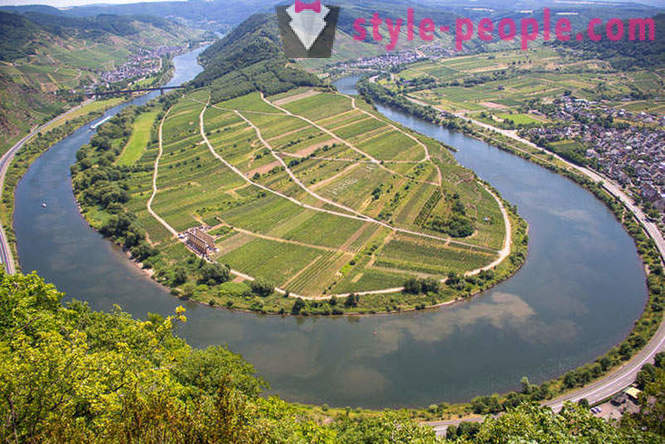
A total of 24 Moselle grown grape variety, but the lion's share (60%) of Riesling (Riesling). Riesling on the region the first place in the world. In second place cultivar Müller-Thurgau aka Rivaner (14%). Further there Elbling (6%) - the most popular grade German in the Middle Ages, and Kerner (4%), which is usually grown in Pfalz and Hessene. Only then dark grapes - Spätburgunder (4%) and Dornfelder (3, 6%), are the two common varieties in Germany. Also cultivated varieties that we normally associated with France: Chardonnay, Merlot, Sauvignon Blanc, but very few of them. 91% of all cultivated grapes - light grades.
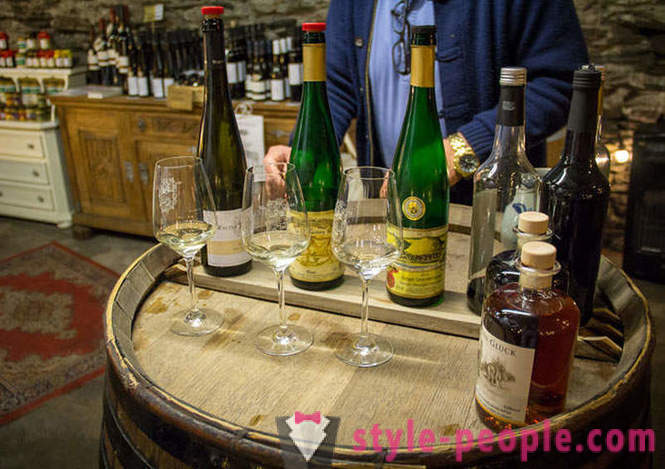
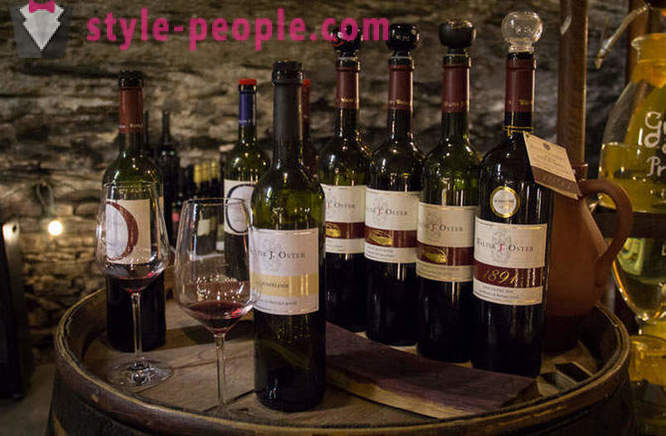
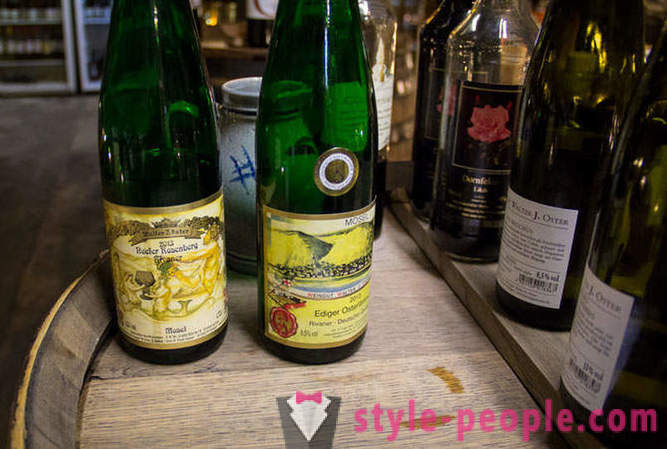
At the beginning of July, the different varieties of grapes may look like. This they still immature.
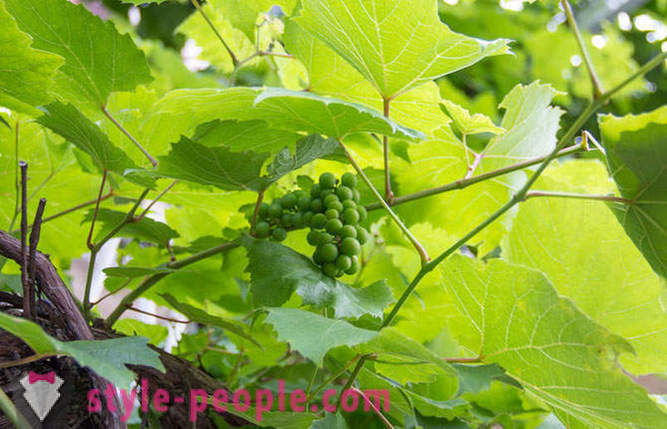
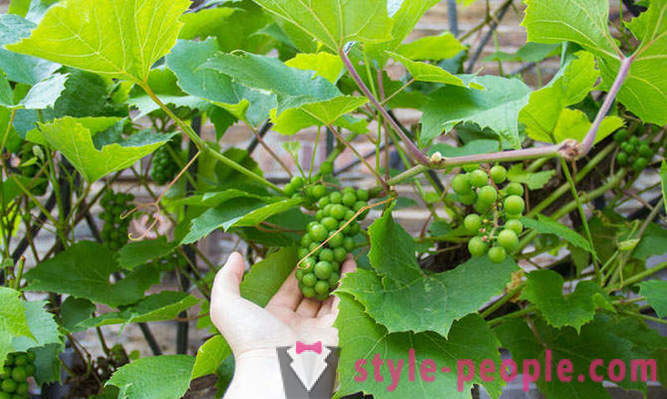
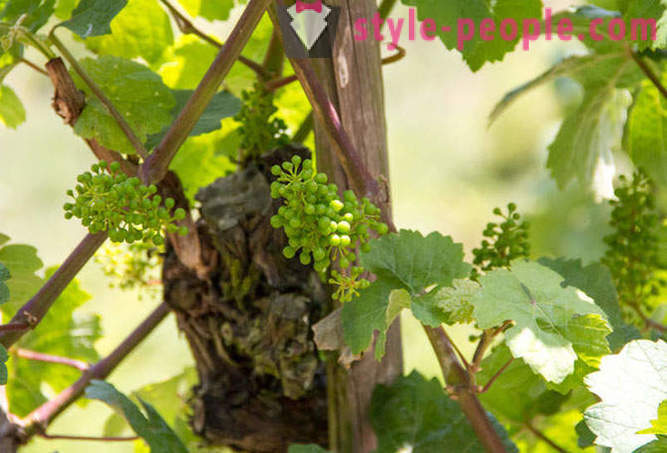
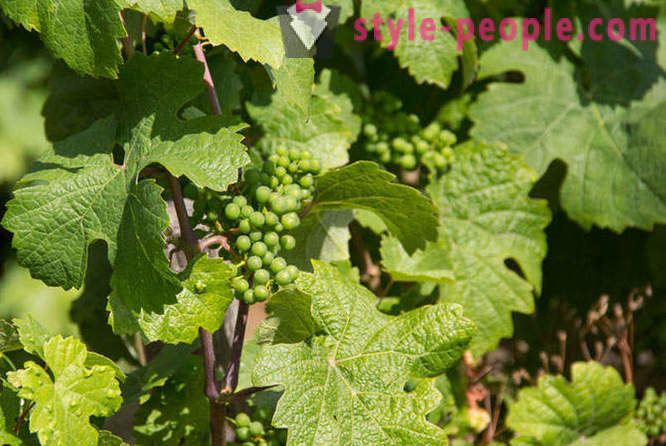
"Adult" Riesling looks like
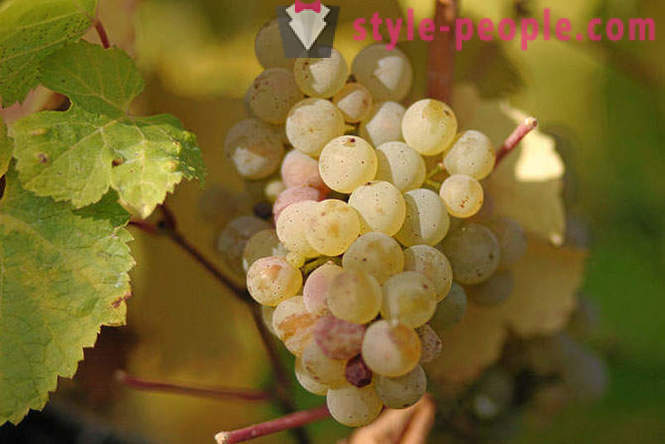
The production of wine - the process time-consuming and lengthy. It begins even with the grape harvest, and in the spring, with the preparation of the soil and the appearance of the first leaves. Each plant is tied to a wooden peg, you must also remove excess shoots to grow, in a certain way and has reached a certain size and shape. As told to Winzer excursions, cut off the excess must be about 3-4 times over the summer. She handled their vineyards before the end - just have time to start from the beginning of the next round. All this, remember, on the steep slopes of the Moselle. As Winzer said they have a child grow a foot at a right angle to climb mountains all day.

The grapes on the Moselle takes place in September and December. Depending on the variety and the quality of the future wine. This is preceded by a big celebration of wine, which symbolically marks the beginning of the collection. Significant events, places in hotels already bought a dekayurya-January. Mosel is full of happy drunken companies, general merriment and joy. The grapes are harvested before frost. The most valuable wine - Eiswein - just from frozen on the vine at a temperature of -7 degrees grapes. There are valuable wine from dried on the vine berries (Trockenbeerenauslese), but more on that below.
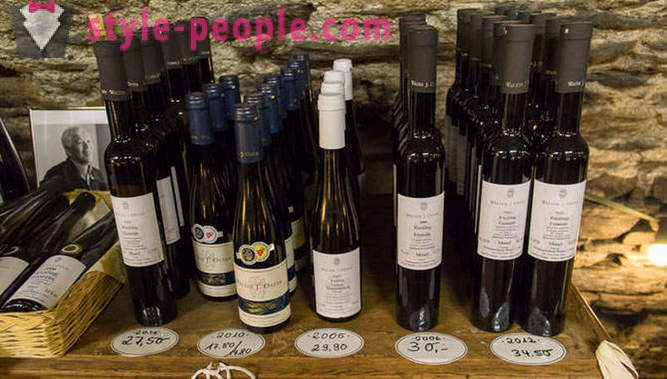
As the gathering of different varieties of wine production begins as such. The manufacturing process of white and red wine is different. Bright grapes crushed pressure to get the juice, and the juice then left to ferment under certain conditions. Dark grape is not so simple. red wines must be obtained, but after dark grapes from the inside white. Red wine gives the peel, which means that you can not just squeeze the juice, it is necessary to leave the grapes to ferment as it is to the skin color defected to wine. But, in general, and the future of red wine in his time getting rid of the pulp and skin (including then driven grape spirit) and as white, poured into barrels.
Since white wine on the Moselle longer need a large storage container. White wine is stored is usually (but not always), but in these drums.
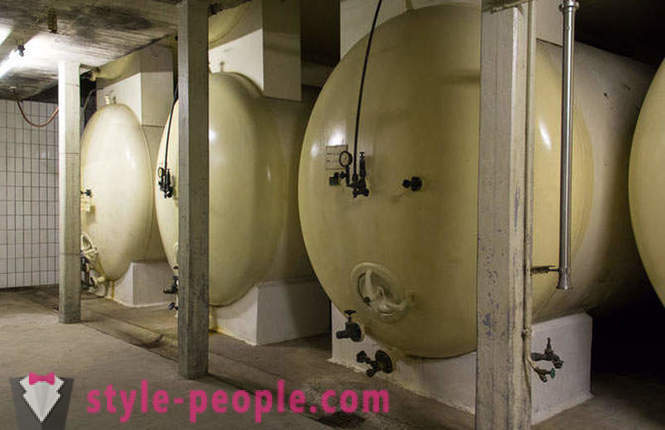
The wooden casks are stored in the main red wine.
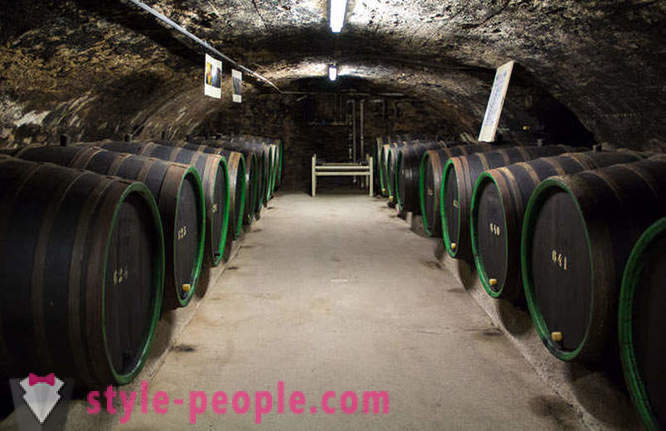
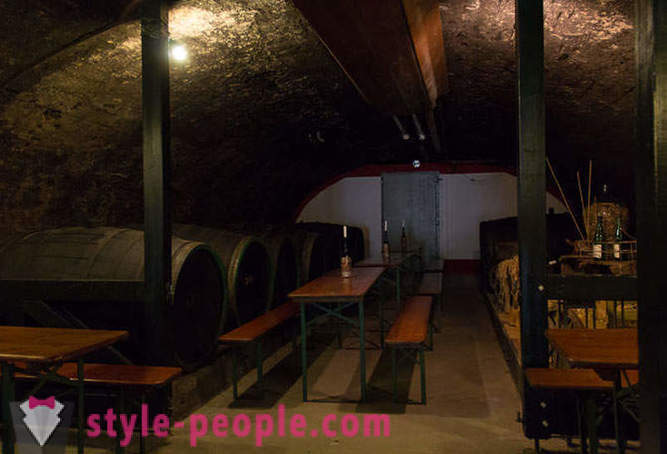
During the winter, the wine is poured several times from the barrel into the barrel that failed to form on the bottom sediment. So that winter work winemakers enough. And, finally, begin to spring wine bottling. Some wines, however, are left stored in barrels for a few months or years, to give them a special quality (and price). As an example, here is a red wine that is left to ripen further nine months in oak barrels.
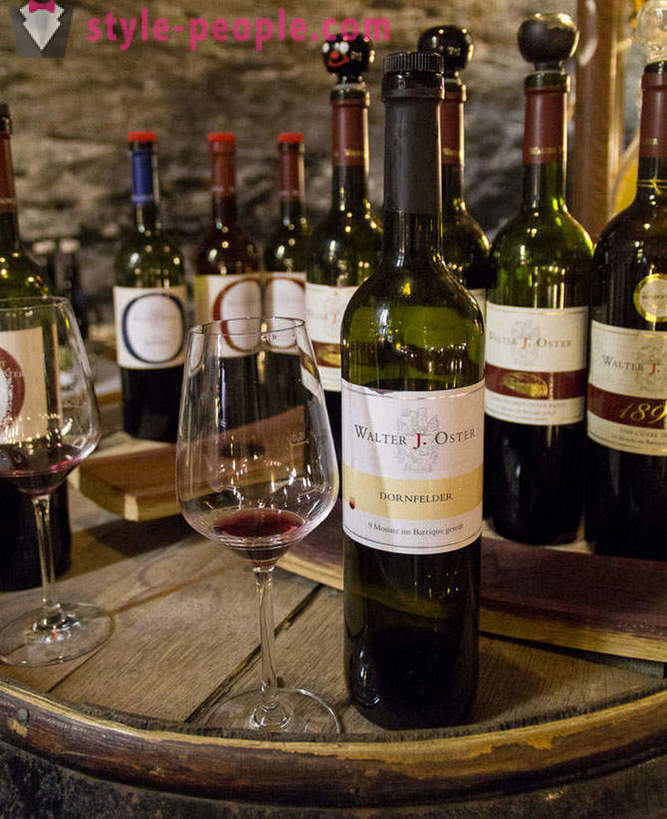
Thus, all in all takes a year, from spring to spring. The paper helps winemakers trained lizards

The German labeling wines nesokolko different from the French, Italian, Spanish, or English terms those who write on the bottles from Australia, South Africa or Latin America.
The taste of wine differs by:
trocken - dry
halbtrocken - semidry
feinherb - something between a semi-dry and semi-sweet, fairly neutral taste without acid
lieblich - sweet - sweet
süss - a very sweet
On the quality of German wine differs by:
Tafelwein - wine rather low quality and not the most refined taste. In fact, quite unappetizing and unpopular thing.
Landwein - slightly more than the first type of quality
Qualitätswein - literally "quality wine" :). since this level of the wine you can drink, in general, any grade and grade will be good.
Qualitätswein mit Prädikat, or even simply write Prädikatswein - even better wine made according to specific standards. In particular, when it shall be prohibited to use Chaptalization - is when the grapes are the weather conditions have to collect immature or sour, and its juice is further podsaharivayut for better fermentation and flavor. This technique invented in 1800 by the French and it is used in all wine-growing regions of Europe with poor harvests. Rules and standards Chaptalization strictly prescribed by law. So, this kind of wine is done without it, but completely natural way.
Prädikat, in turn, also can be different - in ascending order:
Kabinett - this is the lowest steper predicate wine without Chaptalization and certain pokazaletem Oechsle scale, which measures the density of the grape must Spätlese - from grapes harvested in the later period. It not only has time to accumulate more sugar, it manages to Napa mold fungus Botrytis cinerea, which is considered to be super nice in the wine :) This so-called "noble rot", which increases the sugar content of the raw material. In fact, the word "rot" in this case should not be confused, wine really turns out very tasty.
Auslese - wine from a separate hand-selected the nicest bunches. In addition, the grapes are harvested even later and it has more sugar. Wine, respectively, sweet.
Beerenauslese - too sweet wine from selected separately, is a little podvyavshih berries with a high sugar content. The later harvested berries, the more they wilted in the sun - the steeper.
Trockenbeerenauslese - one of the most valuable wines. Translated literally "from the selected dry berries." On the tour I have long tried to find out how you can squeeze the juice from dried berries. In general, they are not completely dry, a kind of "poluizyum" of which can still be something to squeeze. And they have to dry on the vine in the bright warm sunshine. To this end, the sun should be clearly and permanently burn at least until October. This wine is made, respectively, not every year. Sometimes not even every decade.
Eiswein - German Wine registry is the most valuable and tasty wine. By the way, it's very sweet. Here special production technology: it is necessary to wait until frost, ie until the end of November or December... At a temperature of -7 degrees frozen grapes harvested. The water is frozen and separated from sugar, so when squeezing all the water in the form of ice separated and only the sugar. Wine last four of the highest levels of the predicate is bottled at 0, 5, in contrast to the usual wine, which has a standard packaging 0, 75. It is, accordingly, unlike the more expensive of all other wines, for example, that these,
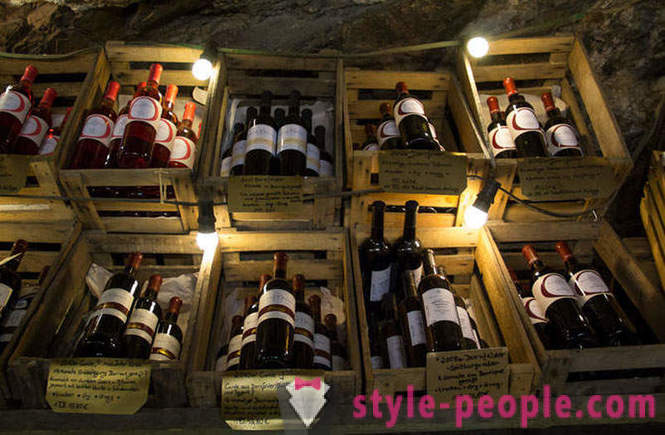
Wine - not only production of the Moselle vineyards. There are grape juice, grape alcohol, various liqueurs and even jelly with white wine.
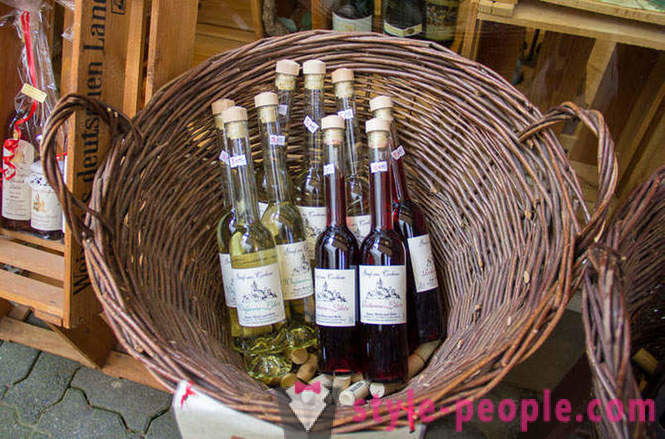
Private rooms are alcoholic products from the red mountain peach, which grows on the Moselle and is considered a regional attraction. It is made liqueur, sparkling wine, jellies and marmalades different.
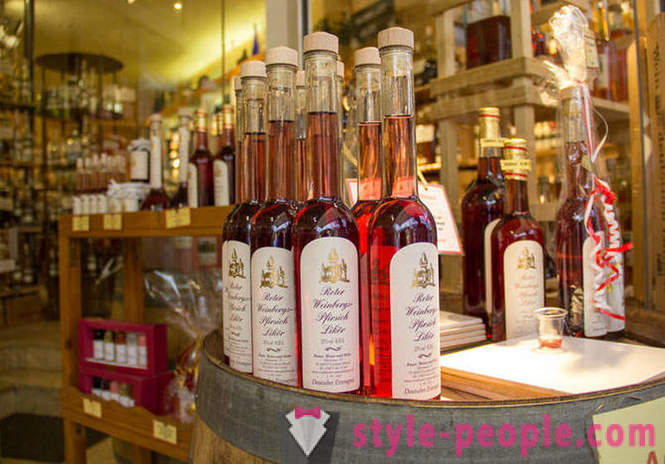
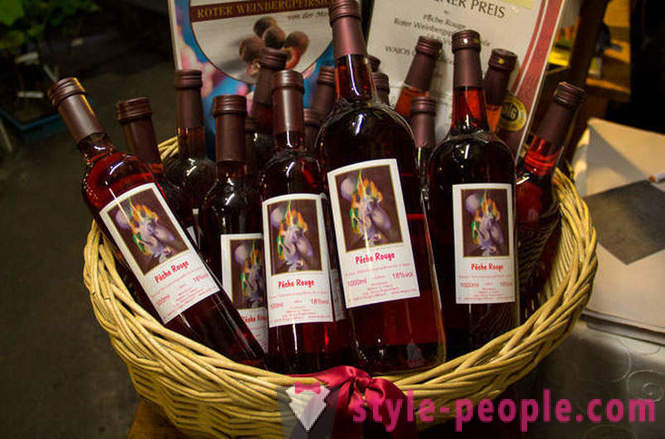
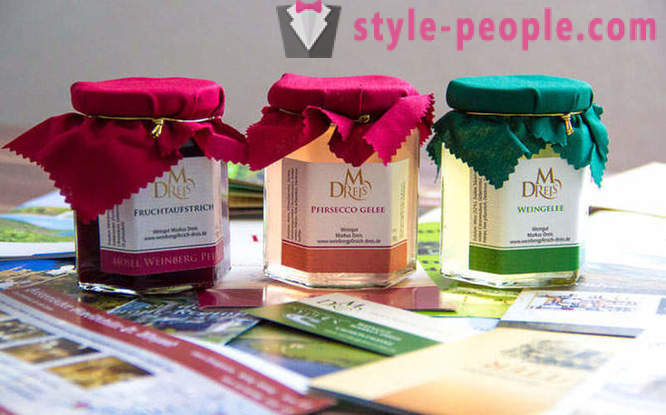
Moselle wines are very tasty, soft, weak. Walking along the Mosel, you can go to any winery or wine shop and try different varieties before you buy something or order. Neat villages and ancient castles, beautiful nature, friendly people, great food - and even more substantial bonuses for wine connoisseurs.
